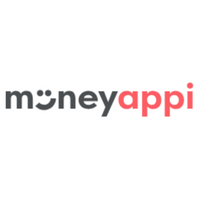Making financial wellbeing measurable with the latest fintech developments
Boards want evidence. Employees want real support. Regulators want better outcomes. Measurement is how HR leaders can deliver all three, and technology is finally making that possible.
Why measurement matters now
Money worries don’t stay at home; they show up at work. CIPD research shows financial stress is already affecting performance for nearly a third of UK employees.
The FCA’s Financial Lives report paints the bigger picture: millions have low financial resilience, and almost half display some form of vulnerability. The IFS adds that 30-40% of private-sector workers are on track to fall short of a basic retirement income.
The message is clear. To protect both productivity and long-term security, financial wellbeing needs to be measured, and more importantly, managed.
HR teams have long recognised that financial wellbeing matters for employee health, productivity, and retention. But while it’s easy to track things like pension contributions or healthcare usage, proving that financial wellbeing initiatives make a difference has been harder.
Without data, these programmes have often been seen as “nice to have” rather than essential.
From reactive to proactive
Traditional support models waited for problems to surface. Helplines and workshops offered help once stress had already taken hold. Now, digital tools are changing that approach.
Employees can access personalised guidance and budgeting support that help them make better decisions before issues escalate.
For employers, anonymised data provides a powerful new lens. It helps spot early warning signs long before they become crises. The key is insight without intrusion. That way, individual privacy stays protected while HR teams can still see the trends that matter.
That’s how financial wellbeing becomes proactive, not just reactive.
Practical way to measure impact
The rise of scoring models is one of the most exciting developments in financial wellbeing. For HR teams, it offers something they’ve never had before: measurable insight. Scores can reveal where employees may be struggling, how wellbeing shifts over time, and where targeted support can make the biggest difference.
Crucially, these models must remain transparent and fair. Regular checks for bias and clear governance help ensure the score reflects reality, not assumption. When handled responsibly, financial wellbeing becomes a data point leaders can trust and act on.
Turning insight into action
Measurement only matters if it drives change. The best strategies use data within scoring models to trigger timely prompts that guide employees towards better financial choices.
When these prompts are delivered seamlessly through existing work tools or payroll systems, they feel natural rather than intrusive. That makes it easier for employees to act, and harder for good intentions to slip away.
Making the case at board level
Financial wellbeing is fast becoming a strategic advantage.
Data from measurable programmes links directly to outcomes that matter: fewer absences, higher engagement, and stronger retention. It can also highlight gaps across different employee groups, supporting ESG and EDI goals. With clear data, HR leaders can finally make the business case in terms the board recognises - reducing risk, improving performance, and investing where it counts.
Getting started
- Start small: identify a few key data points to measure resilience and literacy.
- Build transparently: design a simple, fair scoring model with clear governance.
- Act fast: link insights to quick, practical prompts that make change easy.
- Prove value: track outcomes and feed results back to the board.
Design for trust
Trust determines whether people engage. Keep three promises:
- Clarity: Be clear about what the data and scoring represent. It should focus on guidance and education, rather than offering personal advice.
- Control: Give employees control over their privacy and the option to opt out of non-essential data.
- Fairness: Check regularly for bias and ensure models reflect the diversity of your workforce.
When employees understand that insights are used responsibly, participation grows naturally.
The takeaway for leaders
When financial wellbeing becomes measurable, it becomes manageable.
A clear score turns wellbeing into a KPI. Actionable insights make it relevant. Measurable outcomes prove its worth.
Together, they move financial wellbeing from a soft benefit to a strategic advantage, which helps people feel more secure and businesses perform at their best.
Supplied by REBA Associate Member, Moneyappi
Proactive Financial Wellbeing, made simple, measurable, and for everyone.








